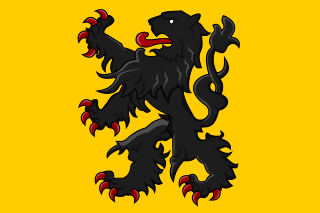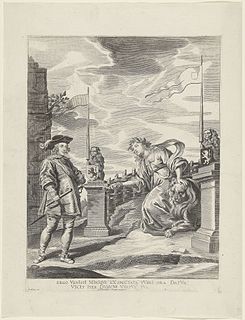 W
WThe County of Flanders was a historic territory in the Low Countries.
 W
WThe House of Flanders—also called the Baldwins —was a medieval ruling family founded by Baldwin I Iron Arm, son-in-law of Charles the Bald.
 W
WThe Brugse Vrije was a castellany in the county of Flanders, often called in English 'the Franc of Bruges'. It included the area around Bruges, and was bordered by the North Sea, the Westerschelde and the Yser river. The city of Bruges was separated from the castellany in 1127. Since then the city and the Vrije were considered as separate customary law areas. The Brugse Vrije was a rich agricultural region. It had its own burgrave, who was seated at the Burg, a square in Bruges, and became part of the Four Members of Flanders at the end of the 14th century, together with the three major cities of Ghent, Brugge and Ypres. The Brugse Vrije sat in the meetings of the States of Flanders.
 W
WFrench Flanders is a part of the historical County of Flanders in present-day France where Flemings were traditionally the dominant ethnic group and where a dialect of Dutch was or still is traditionally spoken. The region lies in the modern-day region of Hauts-de-France and roughly corresponds to the arrondissements of Lille, Douai and Dunkirk on the southern border with Belgium. Together with French Hainaut and the Cambrésis, it makes up the French Department of Nord.
 W
WA Joyous Entry is the official name used for the ceremonial royal entry, the first official peaceable visit of a reigning monarch, prince, duke or governor into a city, mainly in the Duchy of Brabant or the County of Flanders and occasionally in France, Luxembourg, Hungary, or Scotland, usually coinciding with recognition by the monarch of the rights or privileges to the city and sometimes accompanied by an extension of them.
 W
WThe Prinsenhof or Hof ten Walle was a historic building in Ghent, East Flanders in Belgium which served as the official residence of the Counts of Flanders from the 15th century after the Gravensteen fell into disuse. It was used by the Counts of Flanders since at least 1366, having previously been the home of the financier Simon de Mirabello. It completely rebuilt by Philip the Good (1396–1467) who lived there in his youth. Charles V, Holy Roman Emperor was born there in 1500. Today only the postern gate survives.
 W
WRomance Flanders or Gallicant Flanders is a historical term for the part of the County of Flanders in which Romance languages were spoken, such as varieties of Picard. Today the region straddles the border of France and Belgium.
 W
WThe States of Flanders were a representative institution in the medieval and early modern County of Flanders. Initially it consisted only of the Third Estate, with representatives of the three cities of Bruges, Ghent and Ypres. Around 1350 the rural Liberty of Bruges also obtained representation in the States.
 W
WTen Duinen Abbey or the Abbey of the Dunes was a Cistercian monastery at Koksijde in what is now Belgium. It was one of the richest and most influential religious institutions in the medieval County of Flanders. It later relocated to the city of Bruges.
 W
WWalloon Flanders was a semi-independent part of the County of Flanders, composed of the burgraviates of Lille, Douai and Orchies. It is sometimes referred to as Lille–Douai–Orchies
 W
WThe War of the Brabantian Succession was a war of succession triggered by the death of John III, Duke of Brabant. He had no sons, and as the Duchy of Brabant had a tradition of male (agnatic) primogeniture, his three daughters and their three husbands, namely the dukes of Luxemburg and Guelders and the count of Flanders, claimed the inheritance.